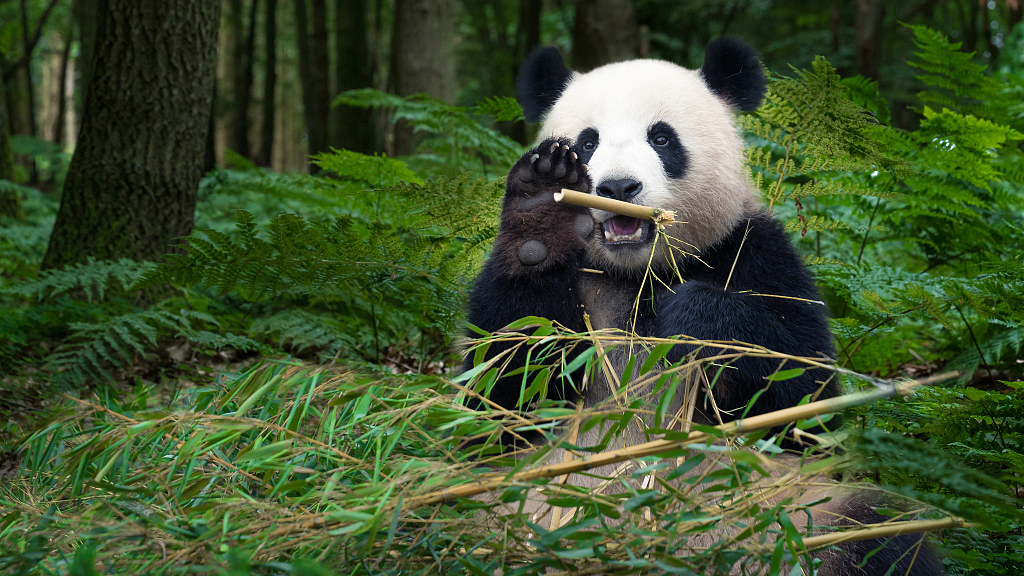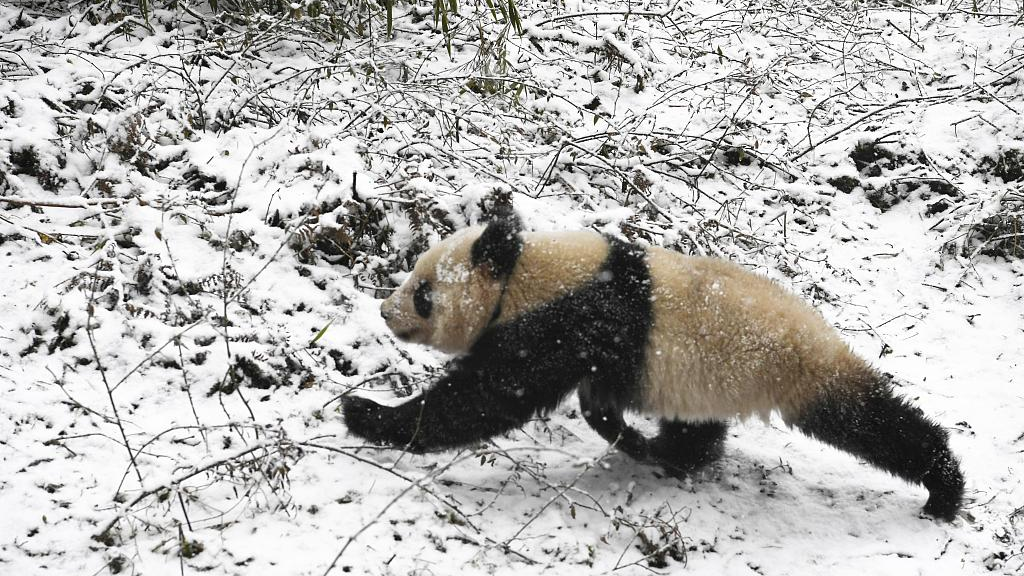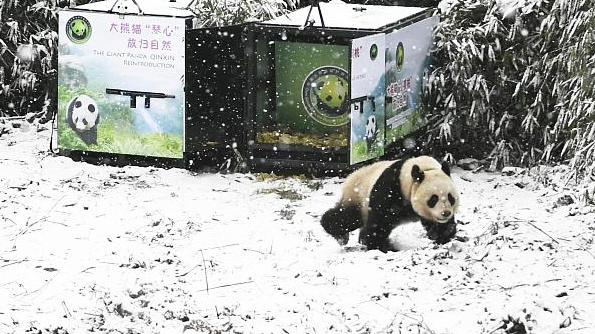00:56

In November 2021, an infrared camera captured a giant panda in the wild for the first time since its release three years ago.
The panda, Xiao Hetao ("Little Walnut"), was released into a nature reserve by the China Conservation and Research Center in Dujiangyan City, southwest China's Sichuan Province in 2018 after being bred in captivity and wild training.
Three years after her release into the wild, the five-year-old female panda is in good health and in good spirits.
According to center, Xiao Hetao has its own territory in the wild, the highest activity point in summer is more than 3000 meters above sea level, and the lowest in winter is more than 1300 meters. It can survive in the wild and migrate for a long distance, completely adapting to the wild environment.

Xiao Hetao was released to the wild in December 27, 2018. /VCG
Xiao Hetao was released to the wild in December 27, 2018. /VCG
Giant pandas released into the wild need to have certain abilities, such as foraging ability, the ability to identify survival resources including nest utilization, the ability to avoid enemy, the ability to mark and identify markers, the ability to reproduce and positioning ability.
The reintroduction of giant pandas is an important means to reduce the extinction risk of local small population and revitalize the wild population. Reintroduction of captive giant pandas into the wild after training can promote blood exchange, maintain genetic diversity, prevent the decline and extinction of small population, which is also the ultimate goal of panda ex-situ conservation.
In 2003, the center officially launched the giant panda rewilding training program. So far, the center has trained and released 11 captive pandas in the wild, which has accumulated valuable experience for the panda training and reintroduction.

It can survive in the wild and migrate for a long distance, completely adapting to the wild environment. /VCG
It can survive in the wild and migrate for a long distance, completely adapting to the wild environment. /VCG
(If you want to contribute and have specific expertise, please contact us at nature@cgtn.com.)

